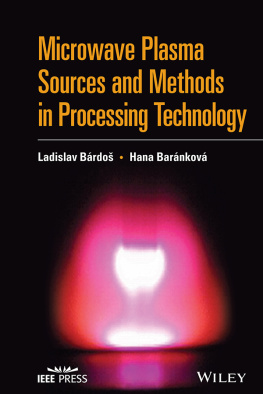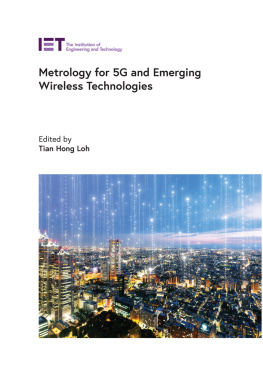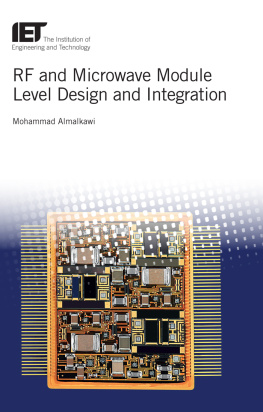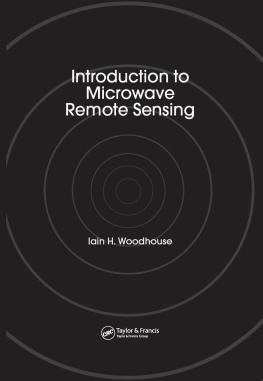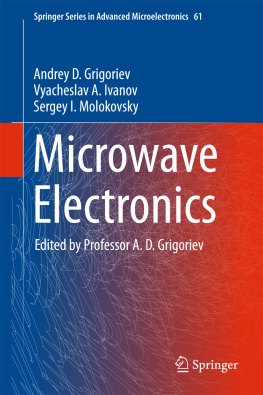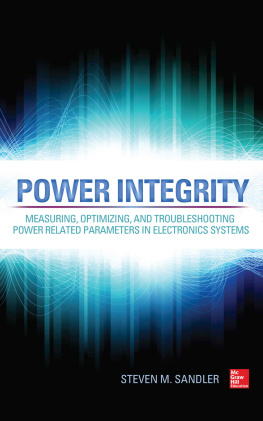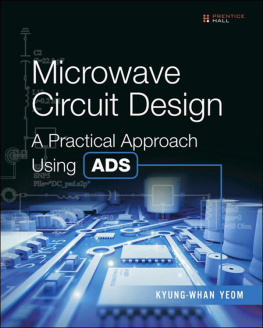Microwave and Wireless Measurement Techniques
From typical metrology parameters for common wireless and microwave components to the implementation of measurement benches, this introduction to metrology contains all the key information on the subject. Using it, readers will be able to
interpret and measure most of the parameters described in a microwave components datasheet
understand the practical limitations and theoretical principles of instrument operation
combine several instruments into measurement benches for measuring microwave and wireless quantities
Several practical examples are included, demonstrating how to measure intermodulation distortion, error-vector magnitude, S-parameters, and large-signal waveforms. Each chapter ends with a set of exercises, allowing readers to test their understanding of the material covered and making the book equally suited for course use and for self-study.
NUNO BORGES CARVALHO is a Full Professor at the Universidade de Aveiro, Portugal, and a Senior Research Scientist at the Instituto de Telecomunicaes. His main research interests include nonlinear distortion analysis in emerging microwave/wireless circuits and systems, and measurement of nonlinear phenomena.
DOMINIQUE SCHREURS is a Full Professor at the KU Leuven. Her main research interests concern the nonlinear characterization and modeling of microwave devices and circuits, as well as nonlinear hybrid and integrated circuit design for telecommunications and biomedical applications.
The Cambridge RF and Microwave Engineering Series
Series Editor
Steve C. Cripps, Distinguished Research Professor, Cardiff University
Peter Aaen, Jaime Pl, and John Wood, Modeling and Characterization of RF and Microwave Power FETs
Dominique Schreurs, Mirtn ODroma, Anthony A. Goacher, and Michael Gadringer, RF Amplifier Behavioral Modeling
Fan Yang and Yahya Rahmat-Samii, Electromagnetic Band Gap Structures in Antenna Engineering
Enrico Rubiola, Phase Noise and Frequency Stability in Oscillators
Earl McCune, Practical Digital Wireless Signals
Stepan Lucyszyn, Advanced RF MEMS
Patrick Roblin, Nonlinear RF Circuits and the Large-Signal Network Analyzer
Matthias Rudolph, Christian Fager, and David E. Root, Nonlinear Transistor Model Parameter Extraction Techniques
John L. B. Walker, Handbook of RF and Microwave Solid-State Power Amplifiers
Sorin Voinigescu, High-Frequency Integrated Circuits
Valeria Teppati, Andrea Ferrero, and Mohamed Sayed, Modern RF and Microwave Measurement Techniques
David E. Root, Jan Verspecht, Jason Horn, and Mihai Marcu, X-Parameters
Nuno Borges Carvalho and Dominique Scheurs, Microwave and Wireless Measurement Techniques
Forthcoming
Richard Carter, Theory and Design of Microwave Tubes
Ali Darwish, Slim Boumaiza, and H. Alfred Hung, GaN Power Amplifier and Integrated Circuit Design
Hossein Hashemi and Sanjay Raman, Silicon mm-Wave Power Amplifiers and Transmitters
Earl McCune, Dynamic Power Supply Transmitters
Isar Mostafanezad, Olga Boric-Lubecke, and Jenshan Lin, Medical and Biological Microwave Sensors and Systems
Microwave and Wireless
Measurement Techniques
NUNO BORGES CARVALHO
Universidade de Aveiro, Portugal
DOMINIQUE SCHREURS
KU Leuven, Belgium


University Printing House, Cambridge CB2 8BS, United Kingdom
Published in the United States of America by Cambridge University Press, New York
Cambridge University Press is part of the University of Cambridge.
It furthers the Universitys mission by disseminating knowledge in the pursuit of education, learning and research at the highest international levels of excellence.
www.cambridge.org
Information on this title: www.cambridge.org/9781107004610
Cambridge University Press 2013
This publication is in copyright. Subject to statutory exception and to the provisions of relevant collective licensing agreements, no reproduction of any part may take place without the written permission of Cambridge University Press.
First published 2013
Printed in the United Kingdom by TJ International Ltd. Padstow Cornwall
A catalog record for this publication is available from the British Library
Library of Congress Cataloging-in-Publication Data
Carvalho, Nuno Borges.
Microwave and wireless measurement techniques /
Nuno Borges Carvalho and Dominique Schreurs.
pages cm
Includes bibliographical references and index.
ISBN 978-1-107-00461-0 (Hardback)
1. Microwave measurements. 2. Microwave circuitsTesting. 3. Wireless communication systemsTesting. I. Schreurs, Dominique. II. Title.
TK7876.C397 2013
621.384028 7dc23 2013013376
ISBN 978 1 107 00461 0 Hardback
Cambridge University Press has no responsibility for the persistence or accuracy of URLs for external or third-party internet websites referred to in this publication, and does not guarantee that any content on such websites is, or will remain, accurate or appropriate.
Contents
This is a text book that every practicing engineer would like to carry into the RF/ microwave laboratory. Written by two known experts in microwave nonlinear measurements, it covers the wide spectrum of microwave instrumentation from the basic definitions of the circuits figures of merit to the more evolved and up-to-date material of digital/analog and time/frequency instruments and excitation design.
Jose Carlos Pedro, Universidade de Aveiro, Portugal
This book provides an excellent foundation for those wanting to know about contemporary measurement techniques used in wireless and microwave applications. The authors have used both their considerable knowledge of the subject matter along with many years teaching experience to provide a clear and structured approach to these subject areas. This book is therefore ideally suited as a foundation text for lectures and/or training courses in this area, aimed at graduate level students and professional engineers working in this industry.
Nick Ridler, IET Fellow
Comprehensive, focussed and immediately useful, this book is an excellent resource for all engineers who want to understand and measure the performance of wireless components and systems.
Uwe Arz, Physikalisch-Technische Bundesanstalt (PTB), Germany
Preface
Metrology has been the most important aspect of wireless communication ever since the time of Maxwell and Hertz at its very beginning. In fact, the metrology aspects related to radio communications have for decades been one of the driving forces for progress in radio communication. For instance, radar is nothing more than a very good measurement instrument that can be used in important applications such as target identification. Nevertheless, most wireless systems nowadays depend heavily on metrology and thus measurement, for instance new spectrum management, QoS evaluation and green RF technologies, since they are all supported in high-quality wireless radio components. That is why it is important to understand the figures of merit of the main wireless system components, how to measure them, and how to model them. Moreover, with recent advances in software-defined radio, and in future cognitive radio, measurements in time/frequency/analog/digital domains have become a very important problem to microwave and RF engineers. This book is aimed to give engineers and researchers answers at the beginning of their laboratory adventures in microwave, wireless systems and circuits. It can also be used in connection with a graduate class on measuring wireless systems, or a professor can select parts of the book for a class on wireless systems in the broad sense. The main idea is to have a text that allows the correct identification of the quantities to be measured and their meaning, allows one to understand how to measure those quantities, and allows one to understand the differences between excitation signals, and between instruments, and between quantities to be measured in different domains (time, frequency, analog, and digital). Along this path to completeness the authors expect to give an overview of the main quantities and figures of merit that can be measured, how to measure them, how to calibrate the instruments, and, finally, how to understand the measurement results. Measurements in different domains will also be explained, including the main drawbacks of each approach. The book will thus be organized as follows.
Next page


